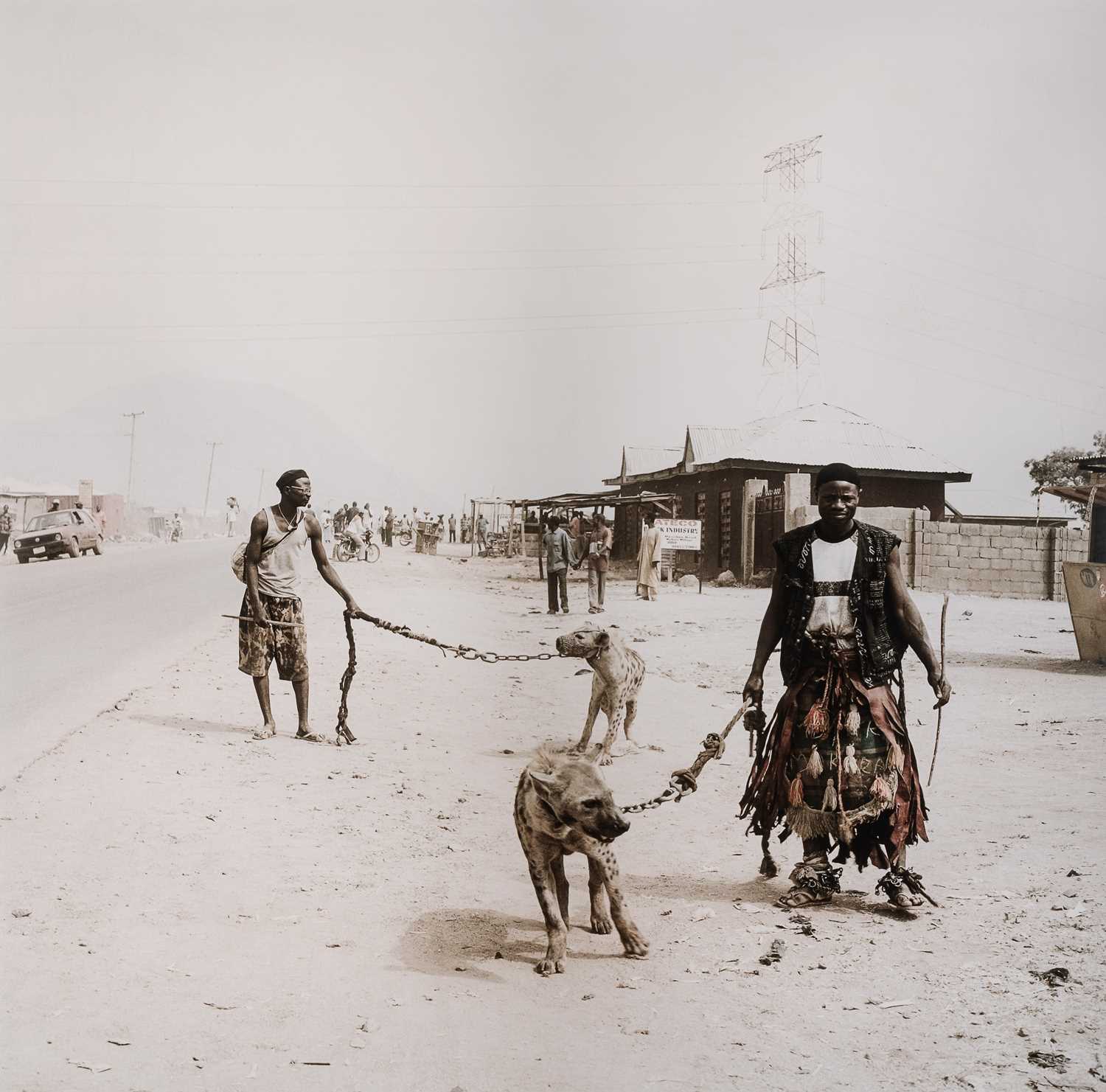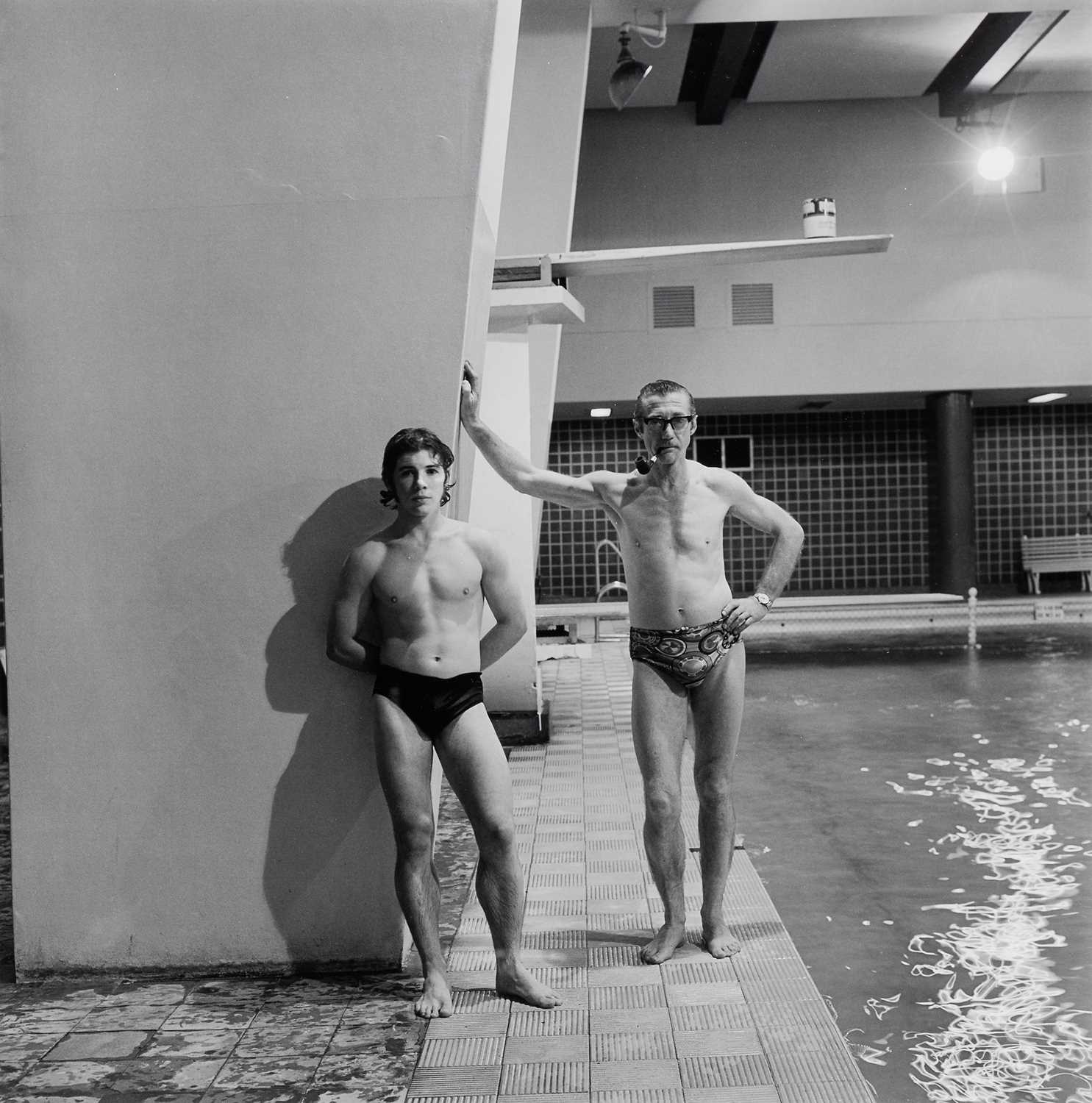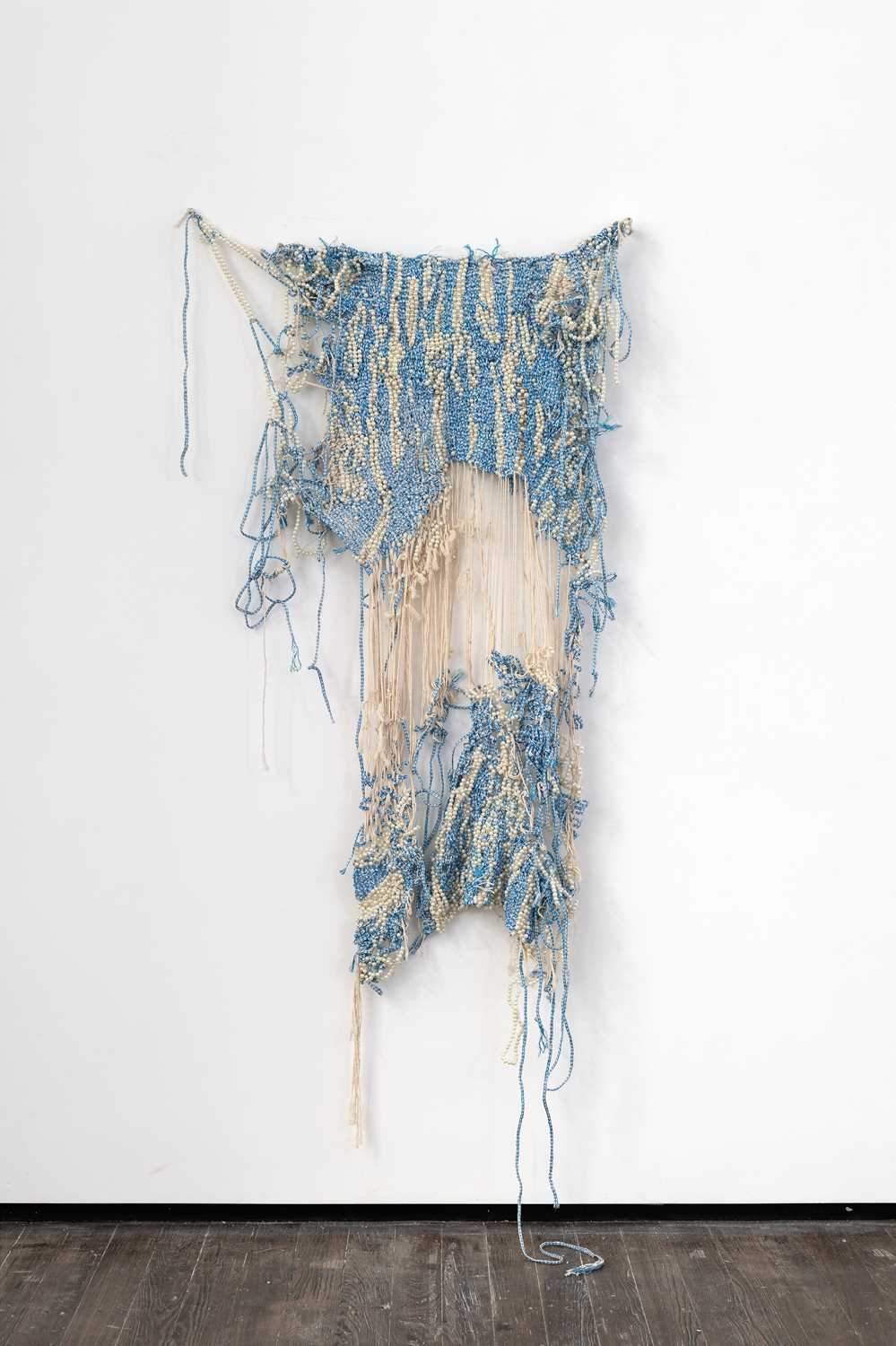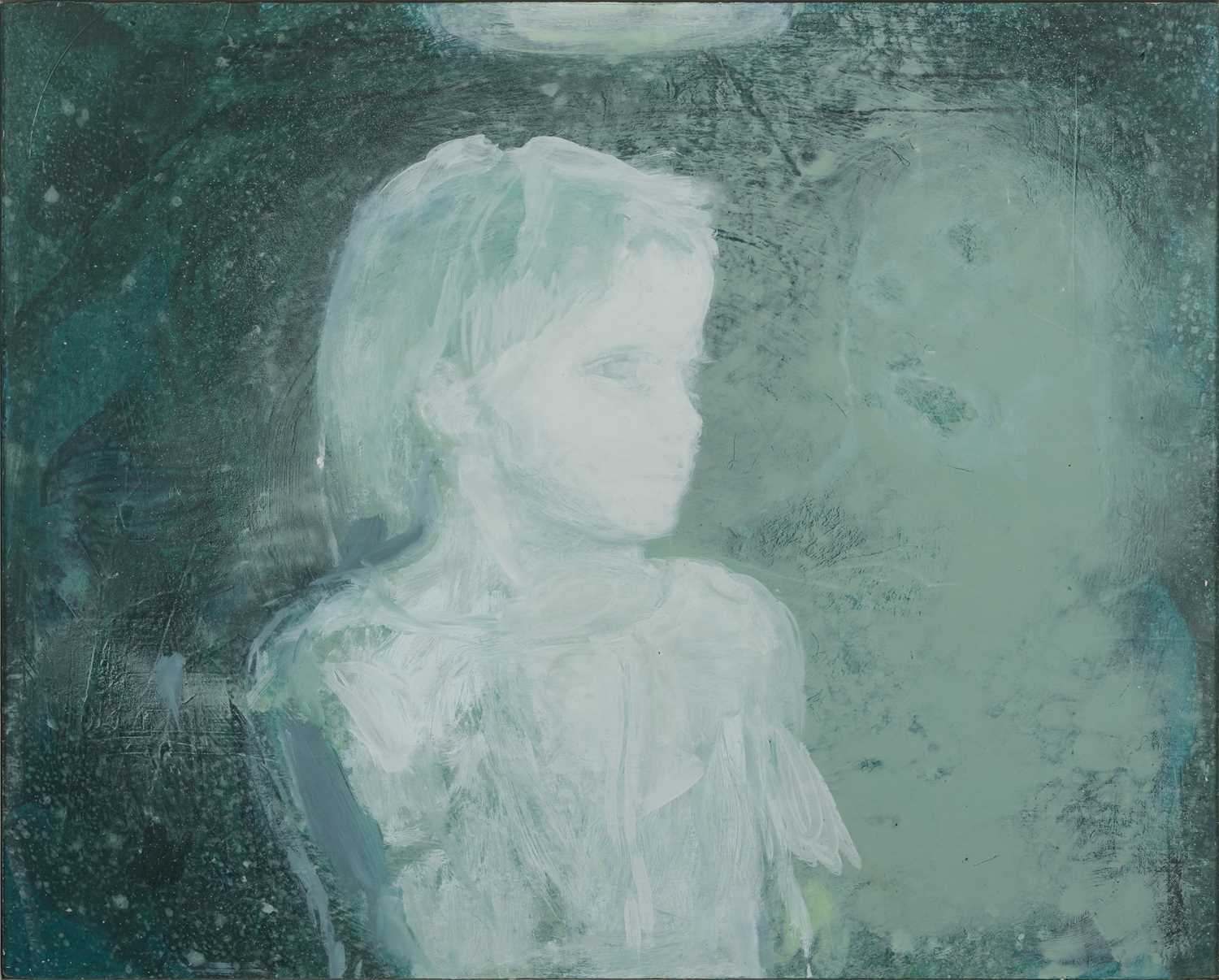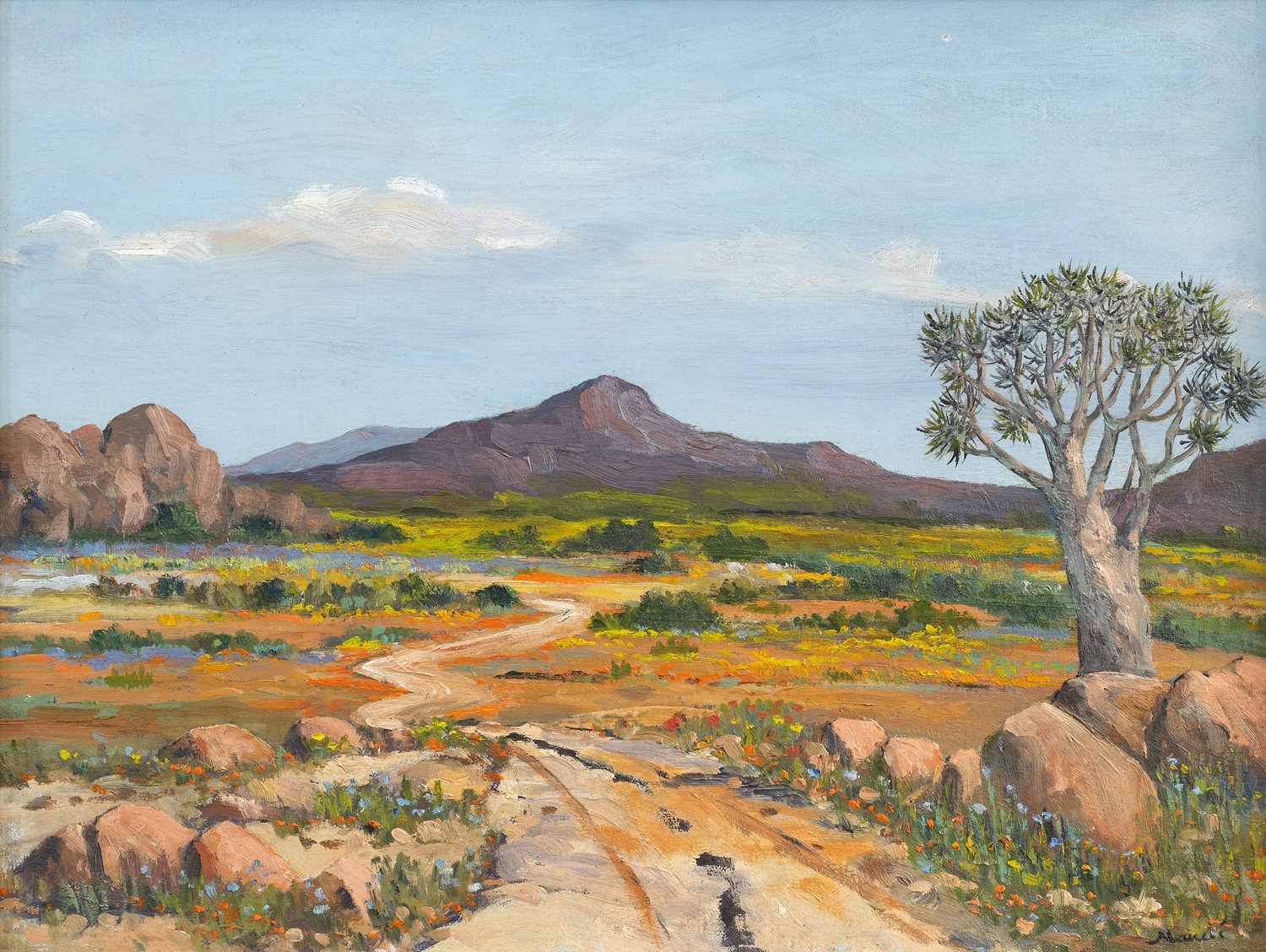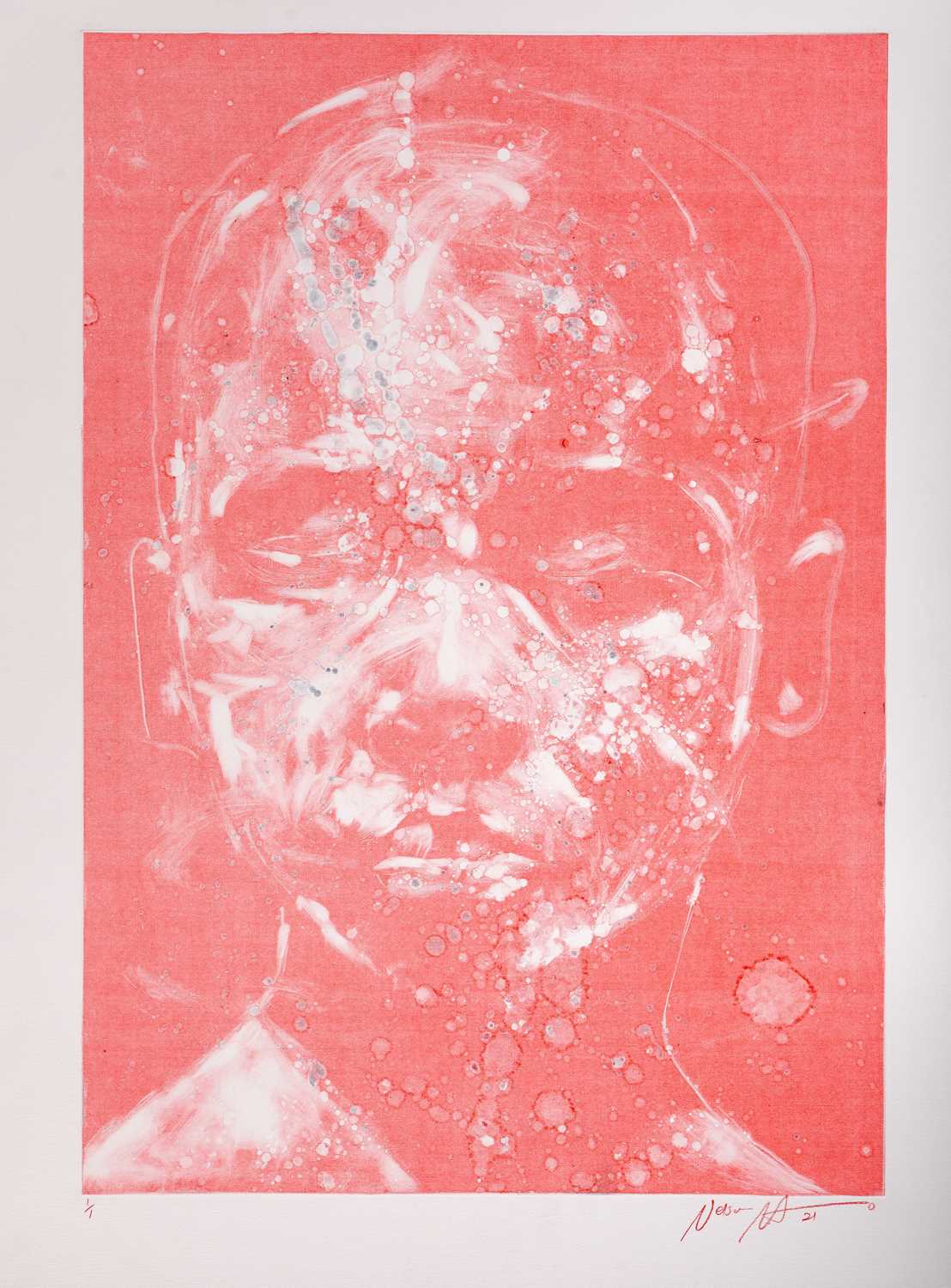16th Nov, 2023 18:00
20th Century & Contemporary Art
51
Pieter Hugo (South Africa 1976-)
Mallam Galadima Ahmadu with Jamis and Mallam Mantari Lamal with Mainasara, Abuja Nigeria
archival pigment ink on cotton rag paper
Artwork date: 2005
Signature details: signed, dated, numbered 3/5 and inscribed 'From the Hyena Men of Nigeria Series' in pencil in the margin
Edition: from an edition of 5 +1 AP
Exhibited: Michael Stevenson Gallery, Cape Town, 'Pieter Hugo 'Gadawan Kura - The Hyena Men', 22 February to 25 March 2006, an example from the edition exhibited.
Sold for R228,750
Estimated at R200,000 - R300,000
archival pigment ink on cotton rag paper
Artwork date: 2005
Signature details: signed, dated, numbered 3/5 and inscribed 'From the Hyena Men of Nigeria Series' in pencil in the margin
Edition: from an edition of 5 +1 AP
Exhibited: Michael Stevenson Gallery, Cape Town, 'Pieter Hugo 'Gadawan Kura - The Hyena Men', 22 February to 25 March 2006, an example from the edition exhibited.
(1)
sheet size: 112 x 110 cm; image size: 100 x 100 cm; framed size: 114.5 x 114.5 x 6 cm
Provenance:
Private collection, Cape Town.
GADAWAN KURA – THE HYENA MEN
Many myths surround Nigeria’s ‘hyena men’. Intriguing figures, they are believed to be bank robbers, bodyguards, drug dealers or debt collectors. In reality, they are entertainers. The travelling group uses animals to entertain crowds and sell traditional medicine. They are all related, and practicing a tradition which has been passed down from generation to generation.
Pieter Hugo’s compelling documentation of the group came about after a friend emailed him an image of men walking down the street with hyenas in Lagos. The photo, taken with a cellphone through a car window, captivated the artist who soon tracked down a Nigerian reporter, Adetokunbo Abiola who knew the ‘Gadawan Kura’, as they are known in Hausa.
Abiola arranged for Hugo to meet the group and he travelled to Nigeria where he found them – a group of men, a little girl, three hyenas, four monkeys and a few rock pythons – living in a shantytown on the periphery of Abuja. The spectacle they caused was tremendous and Hugo, initially, tried to capture this but he found that his interest did not lie in these performances.
What fascinates the artist is the “hybridization of the urban and the wild and the paradoxical relationship the handlers have with their animals – sometimes doting and affectionate, sometimes brutal and cruel”.[1] He continued to look for situations where this was evident, going for walks with individual handlers and taking portraits at opportune moments.
The series has caused a multitude of reactions – fascination, disbelief, objection and intrigue. Concerned animal-rights groups have wanted to intervene, although the handlers do have permits from the Nigerian Government. However, Hugo notes that, in Nigeria, people are largely confused when asked how they feel about the treatment of the animals. Their responses are rather centered around economic survival. For Hugo, a focus only on the welfare of animals does not consider the multiple socio-political and economic conditions. The artist suggests that one instead asks, “why these performers need to catch wild animals to make a living. Or why they are economically marginalized if Nigeria is the world’s sixth largest exporter of oil”?[2]
[1] Abiola, A. & Hugo, P. (2008). The Hyena and Other Men. Munich: Prestel Verlag, unpaginated.
[2] Ibid.
COLLECTOR'S NOTE
An example from this edition forms part of the Mercedes-Benz Art Collection, Stuttgart, Germany.
COLLECTIONS
The artist is represented in numerous local and international collections, notably, the 21c Museum, Louisville, USA.; USA Auckland Art Museum.; USA Centre Pompidou, Paris.; Chrysler Museum of Art, Norfolk, USA.; Cincinnati Art Museum, USA.; Cleveland Museum of Art, Ohio, USA.; Daimler Art Collection, UK.; Deutsche Börse Group, Frankfurt, Germany.; Ethnologische Museum, Berlin, Germany.; FNAC, France.; Foam Photography Museum, Amsterdam.; Folkwang Museum, Essen, Germany.; Fondazione Cassa di Risparmio, Modena, Italy.; FRAC Réunion, Reunion Island, France.; Gemeentemuseum, Den Haag, the Netherlands.; Huis Marseille, Amsterdam.; Johannesburg Art Gallery.; Iziko South African National Gallery, Cape Town.
You can place an absentee bid through our website - please sign in to your account on our website to proceed.
In the My Account tab you can also enter telephone bids, or email bids@aspireart.net to log telephone/absentee bids.
Join us on the day of the auction to follow and bid in real-time.
The auction will be live-streamed with an audio-visual feed.
Auction: 20th Century & Contemporary Art, 16th Nov, 2023
HIGHLIGHTS
IMPORTANT NOTICE:
Logistics
While we endeavour to assist our Clients as much as possible, we require artwork(s) to be delivered and/or collected from our premises by the Client. In instances where a Client is unable to deliver or collect artwork(s), Aspire staff is available to assist in this process by outsourcing the services to one of our preferred Service Providers. The cost for this will be for the Client’s account, with an additional Handling Fee of 15% charged on top of the Service Provider’s invoice.
Aspire Art provides inter-company transfer services for its Clients between Johannesburg and Cape Town branches. These are based on the size of the artwork(s), and charged as follows:
Small (≤60x90x10 cm): R480
Medium (≤90x120x15 cm): R960
Large (≤120x150x20 cm): R1,440
Over-size: Special quote
Should artwork(s) be collected or delivered to/from Clients by Aspire Art directly, the following charges will apply:
Collection/delivery ≤20km: R400
Collection/delivery 20km>R800≤50km
Collection/delivery >50km: Special quote
Packaging
A flat fee of R100 will be added to the invoice for packaging of unframed works on paper.
International Collectors Shipping Package
For collectors based outside South Africa who purchase regularly from Aspire Art’s auctions in South Africa, it does not make sense to ship artworks individually or per auction and pay shipping every time you buy another work. Consequently, we have developed a special collectors’ shipping package to assist in reducing shipping costs and the constant demands of logistics arrangements.
For buyers from outside South Africa, we will keep the artworks you have purchased in storage during the year and then ship all the works you have acquired during the year together, so the shipping costs are reduced. At the end of the annual period, we will source various quotes to get you the best price, and ship all your artworks to your desired address at once.
Aspire Art will arrange suitable storage during, and cost-effective shipping at the end, of the annual period.
Collections
Collections are by appointment, with 24-hours’ notice
Clients are requested to contact the relevant office and inform Aspire Art of which artwork(s) they would like to collect, and allow a 24-hour window for Aspire Art’s logistics department to retrieve the artwork(s) and prepare them for collection.
Handling Fee
Aspire Art charges a 15% Handling Fee on all Logistics, Framing, Restoration and Conservation arranged by Aspire.



